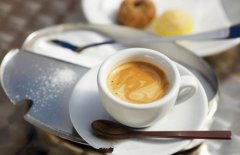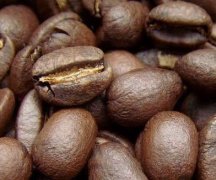How to distinguish the true and false Blue Mountains with the basic knowledge of coffee?

The real Blue Mountain Coffee perfectly combines the sour, bitter, sweet and mellow flavors of coffee, so that other coffees are unmatched. Therefore, Blue Mountain Coffee is generally drunk in the form of black coffee.
Coffee lovers generally think that Blue Mountain Coffee is the best coffee in the world, and Blue Mountain is definitely one of the most expensive coffee in the world. The classic balance of Blue Mountain Coffee is indeed rare and unattainable.
More than 90% of Blue Mountain Coffee is sold to Japan, so there is no doubt that many of the "Blue Mountain Coffee" sold in many cafes in China are fake, and the so-called "Blue Mountain blending" has nothing to do with Blue Mountain. It is because Blue Mountain Coffee is rare and expensive, and what is more important is that some operators are deceiving blind consumers. The beans of "Blue Mountain mix" are mixed, and their shapes are quite different, so they are relatively easy to identify. Don't believe the "best Blue Mountain" that costs dozens of yuan a pound and the "Blue Mountain Coffee" that costs more than 30 yuan a pound. Blue Mountain coffee generally costs 800 yuan per kilogram to get the FOB price, and after adding all kinds of profits, the price is undoubtedly very expensive. Don't waste money on a false name until you are sure or able to judge.
The raw beans of Blue Mountain Coffee are cyan, neat in appearance, medium in size and slightly warped at both ends. After baking, the volume increases a lot, very full.
2 grinding beans real blue mountain coffee beans grow at high altitude, its cytoplasmic structure is relatively loose, when grinding by hand, it feels very crisp, cool and continuous, and there is no feeling of resistance.
(3) the aroma is very rich and dense; the so-called blended Blue Mountain Coffee does not have this aroma.
4 the taste of the real Blue Mountain coffee is balanced and full-bodied, and there will not be any feeling of outstanding or lack of taste, which is the most critical point of identification that can not be reached by any other coffee beans. The aroma of blue mountain peas is more subtle and the taste is relatively stronger.
5 feel Blue Mountain Coffee as the best coffee in the world, the classic balanced characteristics, when tasting will inevitably have some subconscious, indescribable satisfaction.
Important Notice :
前街咖啡 FrontStreet Coffee has moved to new addredd:
FrontStreet Coffee Address: 315,Donghua East Road,GuangZhou
Tel:020 38364473
- Prev

Comparison of Arabica and Robusta Coffee beans Fine Coffee beans
In terms of varieties, coffee trees are mainly divided into two types: one is Arabica, and the other is Robusta Arabica Robusta, which is mainly produced in tropical Central and South America and on the island of Madagascar in west and central Africa. Indonesia in Asia is planted on alpine slopes at an altitude of 9002000 meters above sea level and on alpine slopes at an altitude of 200600 meters above sea level.
- Next

Basic knowledge of boutique coffee how to preserve raw coffee beans
Coffee beans are very similar to people in many places, such as storage environment, people's comfortable environment is suitable for raw beans: dry, dry or wet, cool, not hot or cold, the only exception is light, raw beans should be protected from light. Raw beans are crops and need to breathe, so theoretically the best storage material is clean, odorless and breathable, which is also the best material in the world.
Related
- Beginners will see the "Coffee pull flower" guide!
- What is the difference between ice blog purified milk and ordinary milk coffee?
- Why is the Philippines the largest producer of crops in Liberia?
- For coffee extraction, should the fine powder be retained?
- How does extracted espresso fill pressed powder? How much strength does it take to press the powder?
- How to make jasmine cold extract coffee? Is the jasmine + latte good?
- Will this little toy really make the coffee taste better? How does Lily Drip affect coffee extraction?
- Will the action of slapping the filter cup also affect coffee extraction?
- What's the difference between powder-to-water ratio and powder-to-liquid ratio?
- What is the Ethiopian local species? What does it have to do with Heirloom native species?

